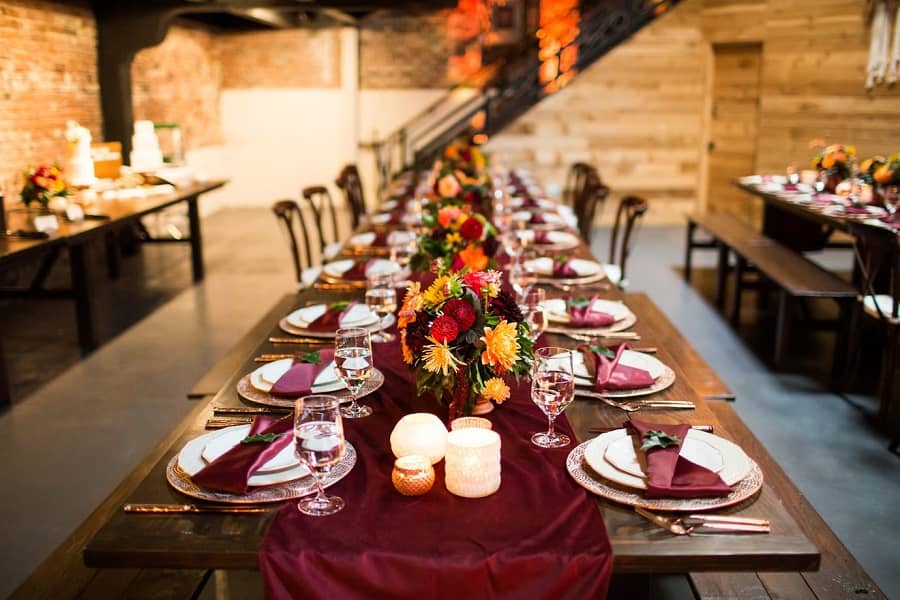In the ever-evolving landscape of culinary experiences, restaurants have continually sought innovative ways to bring people together over a shared love for food. One such trend that has garnered fascination is dining at a communal table. This practice harkens back to ancient traditions of communal feasting, where people would gather around a table laden with dishes to partake in not only sustenance but also conversation, camaraderie, and connection. In this article, we delve into the world of communal dining. We will discuss the unique charm and characteristics of communal dining.
What Is a Communal Dining Table & How It Is Different from a Drop Leaf Restaurant Table?
A communal dining table in a restaurant is a large table where multiple groups or individuals can sit together to share a meal. It promotes a sense of community and encourages interaction among diners. In contrast, a drop-leaf restaurant table is a smaller table with hinged leaves that can be folded down to save space or extended for larger groups. The key distinction between the two lies in the size and purpose. Communal restaurant tables are usually stationary long tables of a certain size that can seat more than 10 people. Drop-leaf tables usually seat 4 or more people and by expanding the leaves can seat an additional 2 or more people offering a lot of flexibility in the size of the group that they can seat.
Benefits of Communal Dining:
There are multiple benefits of communal dining. Here are some of these:
1. Social Cohesion:
Communal dining fosters a sense of community and belonging. In a communal dining setup, diners engage in conversations with multiple dining partners. Sharing stories, experiences, and even recommendations for dishes can create a bond that lingers beyond the meal.
2. Exploration of Food Culture:
This style of dining encourages diners to step out of their culinary comfort zones and try dishes they might not have ordered otherwise. Exposure to new flavors and cuisines can expand one’s palate and culinary horizons.
3. Efficient Seating:
For busy restaurants, communal tables can be a practical solution to accommodate larger groups and walk-in customers. They optimize seating capacity during peak hours. The best asset of a communal table is the ability to seat a large party all at one table to enjoy an occasion such as a birthday party or sporting event.

Navigating the Downsides: Challenges of Communal Dining
While communal dining restaurants offer a plethora of social and cultural benefits, it’s not without its challenges and potential drawbacks. Let’s have a look:
1. Privacy Concerns:
Communal dining can infringe on personal space and privacy. Some individuals might feel uncomfortable eating near strangers if they are using the communal table to seat more than one group of diners. They may feel it is inhibiting their ability to relax and enjoy their meal fully.
2. Noise and Distractions:
The lively and interactive atmosphere of communal dining can sometimes lead to a higher noise level. Therefore, those seeking a more intimate or quiet dining experience find it difficult to enjoy their meal.
Final thoughts,
Communal dining presents a captivating approach to culinary engagement that blurs the lines between gastronomy and human connection. It creates spaces where strangers can become friends and diverse conversations flourish. This way, communal dining style serves as a bridge that spans cultures, generations, and backgrounds. However, it’s important to recognize that communal dining isn’t a one-size-fits-all solution. You should consider its benefits and drawbacks before bringing it into your restaurant culture.
FAQs
Communal-style dining refers to a dining setup where individuals share a common table or space to enjoy their meals together. It fosters a sense of community and social interaction. It often encourages conversations and connections among diners. This approach is popular in various cultures and settings, such as restaurants, events, and gatherings, where people come together to share food, experiences, and stories. It promotes a more inclusive and convivial atmosphere. It encourages a shared dining experience that goes beyond just consuming food.
A communal table in a restaurant is a large table designed to accommodate multiple groups of diners who are not necessarily together. This setup promotes social interaction and a sense of community among patrons. It’s often seen as a way to foster conversations and connections. It makes the dining experience more dynamic and engaging.
Communal meals encompass various forms of shared dining experiences. Family-style dining centers on communal dishes, fostering togetherness. Feasts celebrate special occasions. Buffets offer a self-service variety. Banquets are elaborate, multi-course affairs. Street food markets and pop-up stalls are popular in open-air venues. Community suppers and restaurant communal tables can bring locals and strangers together. These meals intertwine food and social interaction. The ability to accommodate communal dining in your restaurant can garner great opportunities for booking large parties with 10 or more guests.

